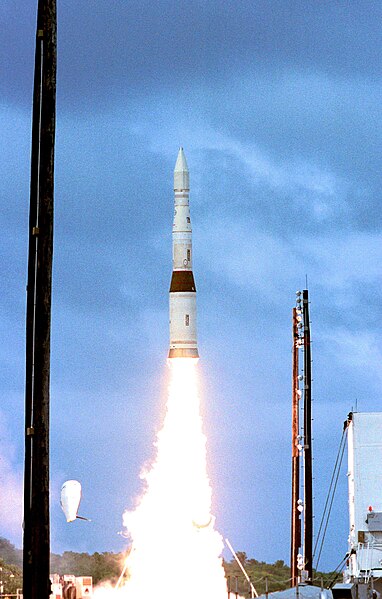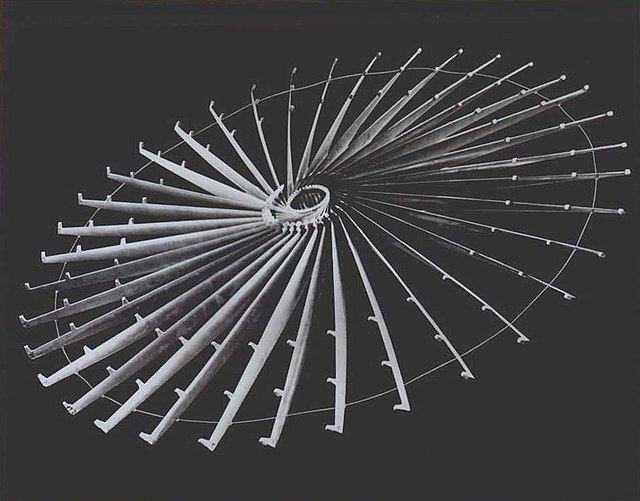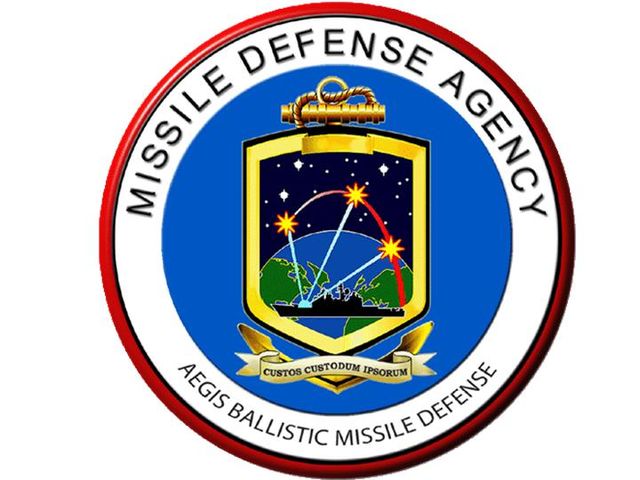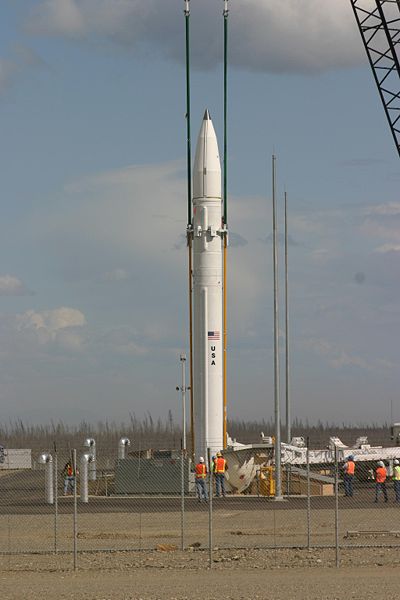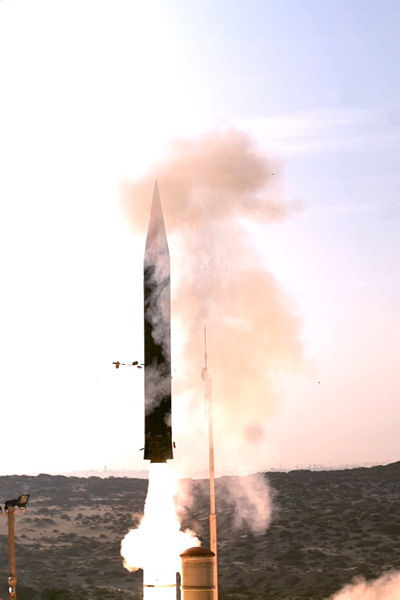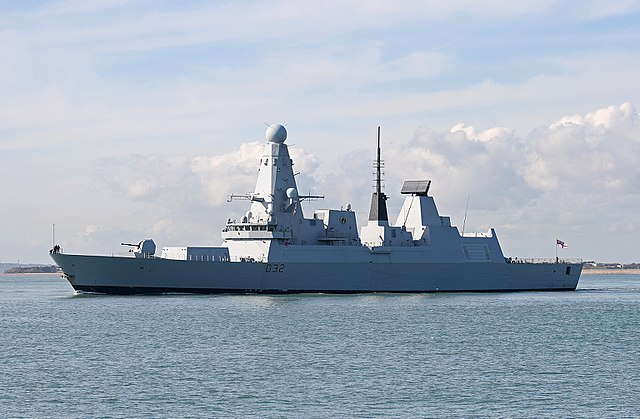United States national missile defense
National missile defense (NMD) refers to the nationwide antimissile program the United States has had in development since the 1990s. After the renaming in 2002, the term now refers to the entire program, not just the ground-based interceptors and associated facilities.
A Payload Launch Vehicle (PLV) carrying a prototype exoatmospheric kill vehicle is launched from Meck Island at the Kwajalein Missile Range on 3 December 2001, for an intercept of a ballistic missile target over the central Pacific Ocean.
Homing Overlay Experiment open web
An infographic describing the Ballistic Missile Defense System (BMDS) created by the Missile Defense Agency in 2010.
Aegis Ballistic Missile Defense System logo
An anti-ballistic missile (ABM) is a surface-to-air missile designed to counter ballistic missiles. Ballistic missiles are used to deliver nuclear, chemical, biological, or conventional warheads in a ballistic flight trajectory. The term "anti-ballistic missile" is a generic term for a system designed to intercept and destroy any type of ballistic threat; however, it is commonly used for systems specifically designed to counter intercontinental ballistic missiles (ICBMs).
A Ground-Based Interceptor of the United States' Ground-Based Midcourse Defense system, loaded into a silo at Fort Greely, Alaska, in July 2004
Israel's Arrow 3
Royal Navy Type 45 destroyers (pictured), and French Navy and Italian Navy Horizon and FREMM frigates operate Aster 30 missiles
AD-1 missile test on 2 November 2022.

